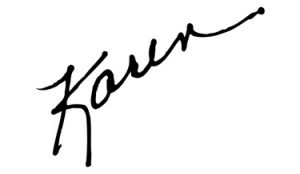It has happened to all of us with at least a couple decades of adult life under our belts: You look back and see some important decisions you made that altered that direction of your life.
Some of us also look back…and see there were crossroads that we didn’t recognize at the time. Karmic opportunities. Missed chances. Decisions we made without reflection.
One effective response to life’s uncertainties is to make your current crossroads explicit — to think clearly about your choices and then make decisions consciously.
Here’s an exercise adapted from the Grove Consultancy that I often use with my coaching clients.
1. Take a blank sheet of paper and draw two intersecting roads on it.
Draw yourself at the crossroads. Put a big thought bubble above you. In it, pose the focus question that describes your current crossroads in life. For example: What do I really want to do with my career? How can I conclude this chapter in my life? How can I balance my work and outside work interests?
2. In one quadrant write about what draws your attention or energizes you. Your answers could range from very specific things, such as learning a new skill, to big dreams.
In another quadrant, write about what is immediate, top of mind. Your answer should focus on the practical realities of your situation, including age and finances.
In the third quadrant write about who and what is involved. It should take into account your network of people and the relationships that affect your plans and decisions.
In the final quadrant, write about the possibilities. Imagine your best and brightest future. Be realistic about side effects and implications…but dream a little.
3. Then return to your focus question. Look for patterns and themes in your writing that will help you focus on the direction in which you need to move your life.
What People Discover
The inspiration for this activity comes from The Personal Compass by The Grove Consultants. As I have used it over time, it’s led to both quick “aha” moments of discovery and longer periods of reflection.
One colleague found it clarified her commitment to take her skills to a smaller organization that offered warmer relationships and greater personal flexibility.
It can be helpful for people weighing moves to a new community – or considering a switch to a more entrepreneurial life.
And it’s a good framework for those flirting with some version of retirement.
It’s good for anyone feeling trapped by inertia. It gets you thinking in new ways.
If you give it a try and find it helpful, as always, I’d like to hear from you. Drop me a line.



Hi, Karen. What a great exercise. Thank you! By any chance do you know the location of this photo? I am looking for something EXACTLY like this for a video project.